All Classes from First to Sixth
First Class
- At the outset, revise all letters – small and capital.
- Introduce joined writing
Joined Writing
Joined writing should be
taught in each class from 1st to 6th . The recommended stage for the
introduction of joined writing is towards the end of the second term of 1st
Class or the start of the third term of 1st Class. The first requirement is
readiness, but this can be a double-edged sword, and waiting for too long may
cause even greater problems with the introduction of joined writing.
- The first priority is legibility
- The second priority is speed
- Check for correct pencil grip and
correct letter formation
The transfer of newly learned components
of handwriting into the child’s daily writing exercises will take
time and care. The changes in handwriting will interfere temporarily at
least with the normal flow of everyday writing.
- To minimise the time span required to
make this transition, the frequency and duration of handwriting sessions should
be increased for as long as is necessary to consolidate the changes.
- When the joins have been taught, and the
child is comfortable with joining his letters, handwriting lessons should move
from the special handwriting copies to the child’s regular copies.
- When the child had successfully
transferred his joined writing to his regular copies, he is then ready to use
joined writing in his everyday exercises.
- The timing of the change from pencil to
pen /biro will depend on readiness, and is at the discretion of the teacher, but
it is anticipated that this transition will have been effected by Third Class
(at the latest). The criteria for this change are that the child is using all of
the joins in his copies and his writing is of a good size.
- The child should be aware of what is
required in matters such as correct letter shapes, correct letter sizes,
appropriate spacing and margins.
- Individuality of handwriting style is
acceptable provided that the degree of legibility is adequate
- Higher standards can be achieved if
handwriting practice is continued into the senior classes and for many children
this practice is needed
- The teaching of handwriting is largely a
matter of teaching movement. Therefore, the importance of demonstration is
obvious. The teacher should model good rhythm and speed when joining writing on
the blackboard.
Joined Writing: 23 Steps

The up-stroke is continued around to
where a, c and d begin
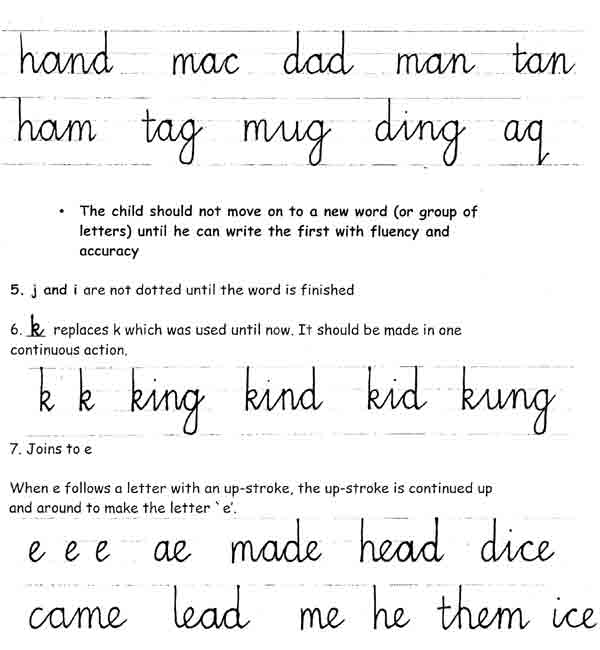
8. Joins to tall letters – b, h, l, k,
t.
When b, h, l, k and t follow letters
which finish with an up-stroke, the up-stroke is the same height as for small
letters, then turns to point straight up to where the tall letter begins and
comes down again to form the letter
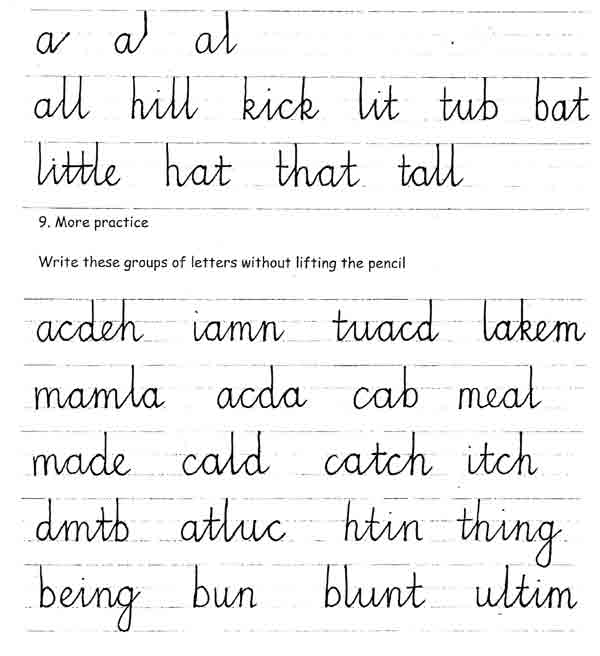

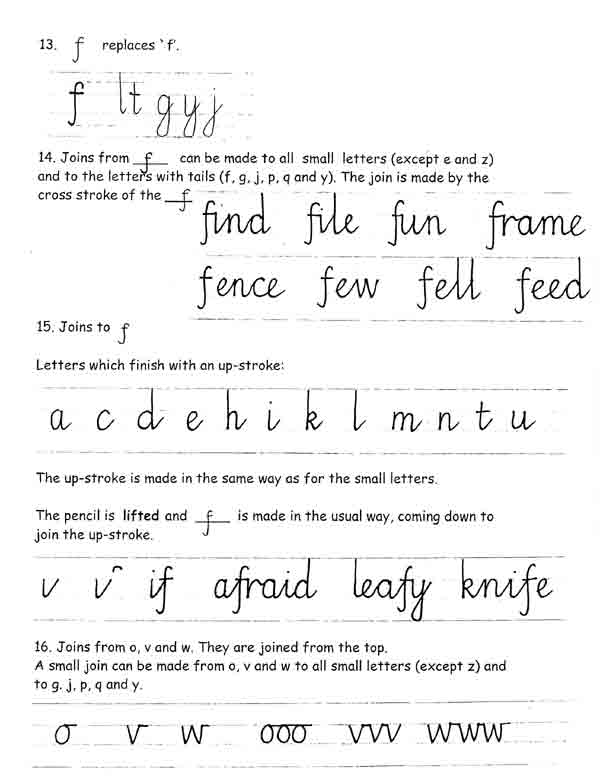
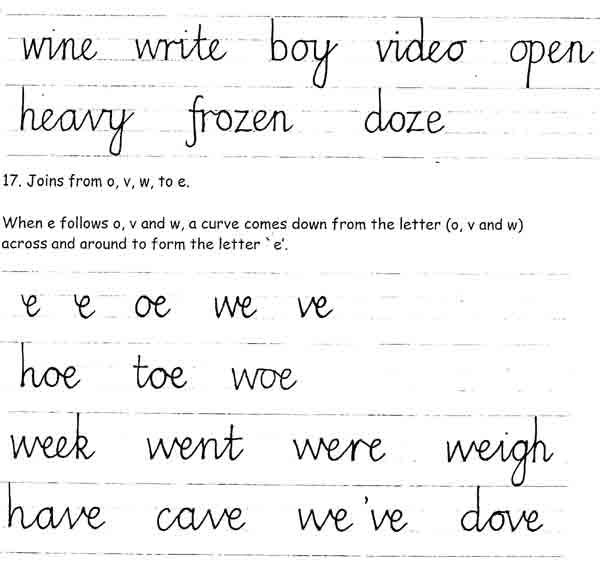


22. ff or ft – use one stroke to cross both letters
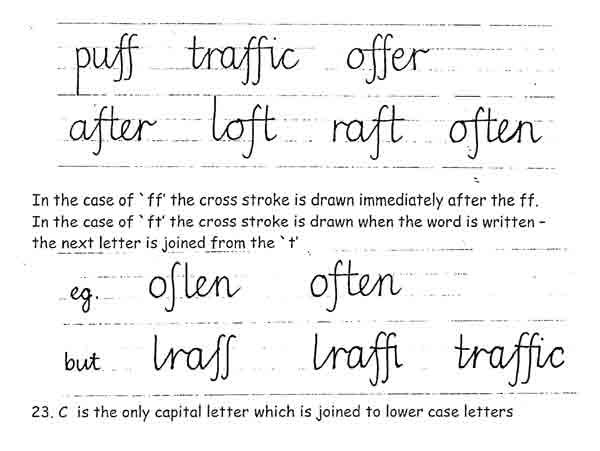
Contact Us
|